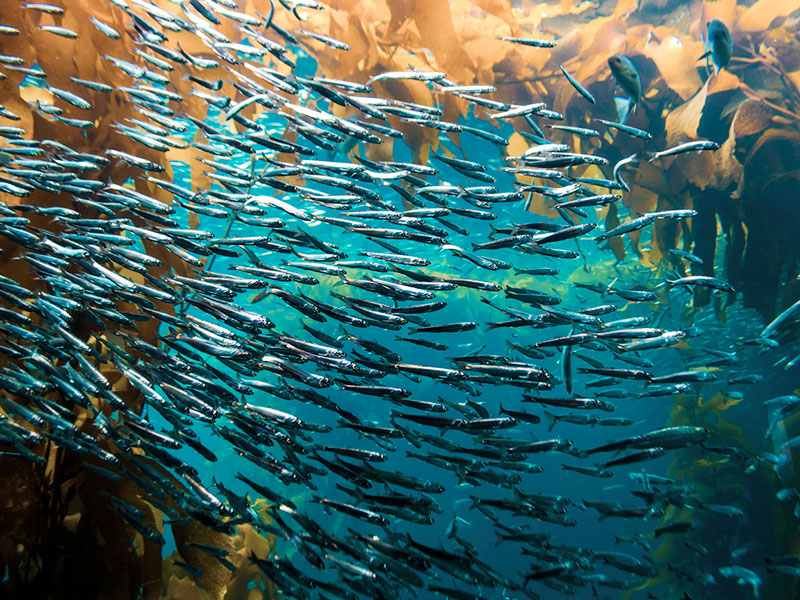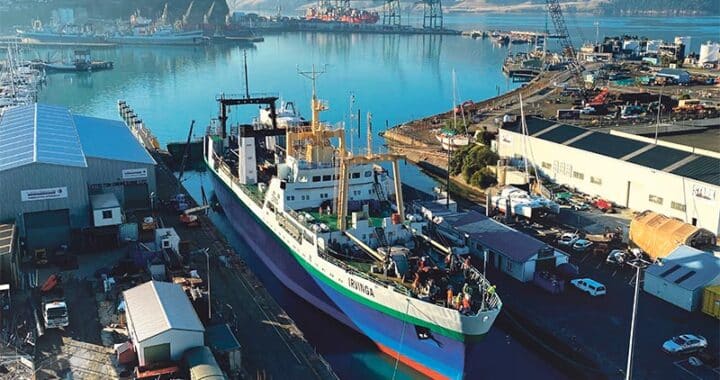Angler debunks minister’s ‘fish farming fantasies’
4 min read
Watson: “With ailing fish stocks, it would be logical to review the QMS” Photo: Zhan Zhang on Unsplash
A Marlborough recreational fisherman, formerly a commercial fisherman, has labelled the worth of fish farming as a myth.
Pete Watson, president of the Marlborough Recreational Fishers Association, commented based on reports of troubles with Scotland’s salmon farms.
“The situation there is so dire that the Scottish Advertising Standards Agency recently ruled that a salmon farm company cannot use the word ‘sustainable’ to describe its product or operations,” he said.
Watson said that in September last year, New Zealand’s fisheries minister Stuart Nash announced a government aquaculture strategy at a Blenheim-held Aquaculture conference.
Nash said the goal to reach $3billion in sales was “ambitious, but achievable” and that government planned to build on the existing $600 million industry by maximising the value of existing farms through innovation and extending into modern land-based farms and open-ocean aquaculture.
But Watson says the government should be concentrating on properly managing natural fish stocks and providing fish to New Zealand shoppers at an affordable price. In New Zealand supermarkets, snapper was currently selling at $48 a kilogramme – when available.
“Deviating off on fish farm fantasies away from efficiently managing the natural fishery seems blatant deception,” said Watson.
The New Zealand sea fishery was under severe stress and threat from over-fishing and had been for many decades. Warnings have been there for many years. Recreational fishers often witnessed first-hand the declines.
He said the Quota Management System (QMS) allowed fishing rights to fish species to be traded, sold, and bought. Inevitably, the corporate companies swallowed up the smaller New Zealand commercial fisherman’s quota shares.
“Today, corporate companies monopolise the fishery. As a former commercial fisherman, I know the situation only too well.”
At the 2017 election, Labour promised to independently investigate the QMS. Yet early 2019, Nash announced he had abandoned Labour’s election pledge to review the QMS.
“It is of deep concern that the minister dishonoured this pledge by a simple comment in a newspaper. At the time, the Marlborough Recreational Fishers Association wrote to the government deploring the broken promise.
“With ailing fish stocks, it would be logical to review the system i.e. the QMS. Instead, the minister – and government – sees fish farming as the saviour,” Watson said. “It’s irresponsible.”
Salmon farming in the Marlborough Sounds had been lauded by King Salmon as of immense potential but Watson challenged the claim saying dead, often diseased, salmon were dumped at the Blenheim landfill but the Marlborough District Council refused to divulge details.
The request was refused because of “commercial sensitivity.” The matter is now before the Ombudsman. The Scottish salmon farming reports told of nitrification of the water, increasing algae blooms, removal of oxygen, and reduced quality.
Scottish salmon farms emitted around 400,000 tonnes of waste in 2017 – equal to the sewage equivalent of 2.5 million people going into the ocean.

Is NZ’s Quota Management System enough for a sustainable fisheries industry?
By Shannon Williams
The issue of overfishing in New Zealand waters has been a contentious topic for decades, with many recreational fishers saying that as commercial fisheries continue to eat up resources, they have seen first-hand the harsh declines in various fish stocks around the country.
In response, the New Zealand Government introduced a Quota Management System (QMS). The QMS is a catch limit that is set for every fish stock – a species of fish, shellfish, or seaweed from a particular area – each year. By using a QMS, the government hopes to keep New Zealand fisheries sustainable.
“The QMS has delivered significant benefits. Before its introduction in 1986, we had limited ability to stop fish stocks becoming overfished. Now we have an ever-growing body of information about the health of our fisheries and can set catch limits to make sure they remain sustainable. Our ability to do this effectively is continually evolving,” said fisheries minister Stuart Nash.
“The Quota Management System provides a framework that is flexible and responsive to change. Where a stock is below expected levels, then I will act to protect it. Careful consideration goes into sustainability decisions in an effort to minimise impacts on fishers, their families, and the regional communities where they operate while still ensuring the sustainability of the fishery,” he said.
The government also has a programme of work in place called the Fisheries Change Programme, which includes digital monitoring of all commercial fishing vessels. There are financial penalties for commercial fishers who catch more than their entitlement in a year. Those who deliberately break the law can face serious consequences, including the confiscation of fishing vessels and jail.
Following a review of catch limits and management controls for 20 fish stocks, Nash announced in September last year, catch limits for tarakihi would be reduced by a further 10%, as part of a package of measures the government introduced to ensure sustainability of a number of fish stocks around the country.
However, the reduced catch limits did not reflect that danger, with lobby groups wanting a 40% reduction in the commercial fishing catch, saying that level of reduction would hold back efforts to help the fishery recover, and that the species had been mismanaged for decades under the QMS.
“Further reductions may be introduced if industry are not able to deliver on commitments in the Industry Rebuild Plan. I have instructed Fisheries New Zealand to monitor this regularly and closely monitor performance against the Industry Rebuild Plan and report any non-performance,” Nash said at the time.
“Sustainable use is at the heart of all of these decisions. They are based on the best available scientific information along with feedback from the community. It’s about making sure there are enough fish in the water for current and future generations to enjoy,” he said.
“Responsive management is essential to sustainable and productive fisheries resources and I have made these decisions for the long-term health of our fisheries for all New Zealanders.”



